Artist Interviews 2021
Stephanie Day-McGann 
By Laura Siebold
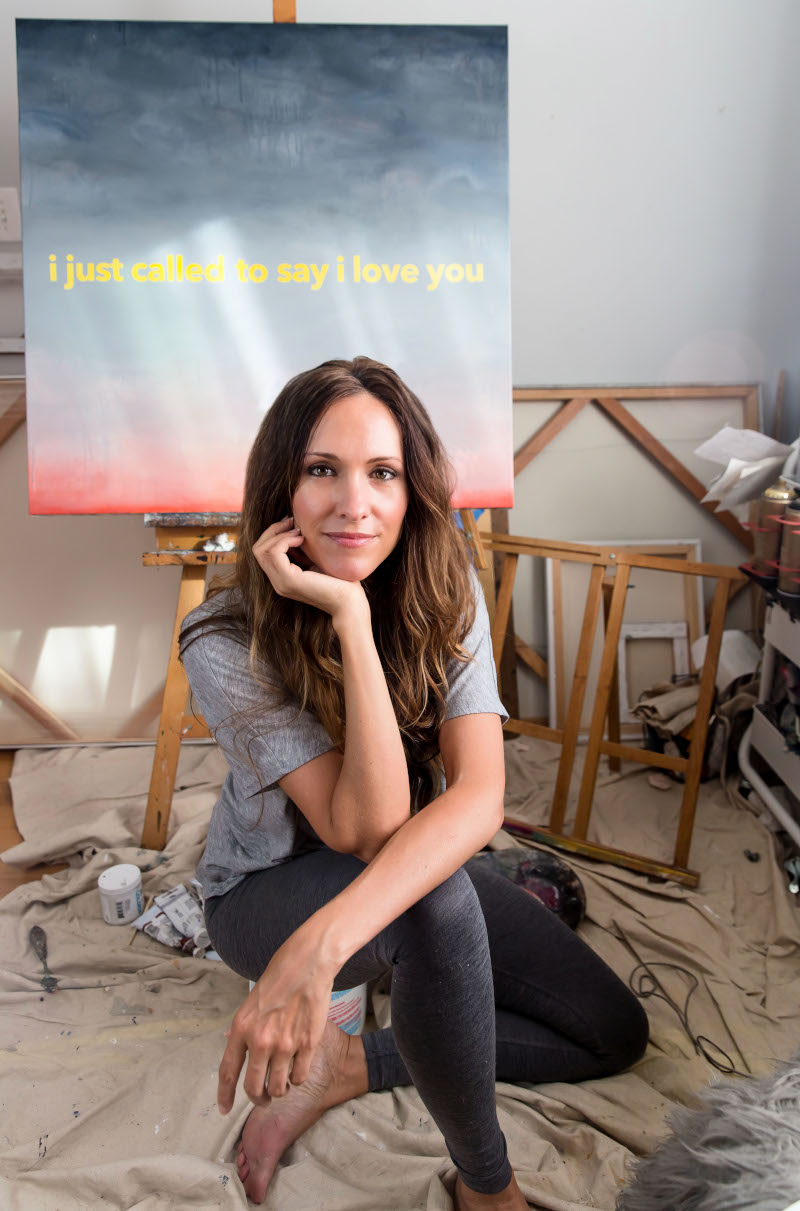
Stephanie Day-McGann is a visual artist, painter and photographer, who has mastered the art of creating symbolically meaningful images through the combination of color, shapes, and words.
Layers of oil and acrylic paint create the illusion of space, imitating the many layers of life and music in her song lyric paintings. Each of Stephanie’s series conveys a specific message; her Pandemic series being the most recent one.
Stephanie’s recent series mostly caught our attention when exhibited at The Other Art Fair September 2021 edition. In her interview, the artist speaks about the religious symbolism behind her Circle series, the audible and visual experience of her Pandemic series, and the effects on her creative process.
With her art, Stephanie wants to raise awareness of important cultural, political, and economic topics like the Covid-19 pandemic, as well as environmental issues like global warming. Stephanie lives in Los Angeles, California.
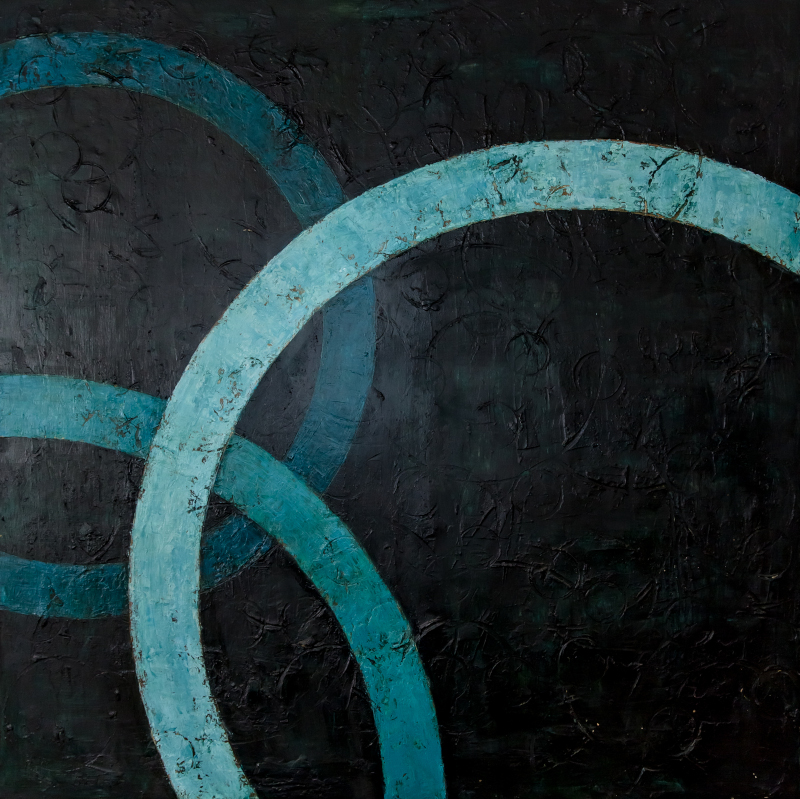
Your different painting series are very diverse; yet have certain common elements. How do colors, shapes, and words work together in your paintings?
They are very diverse and would like to break the mold that an artist must only have one style. Each series conveys its own message, and when I create a new series, I think of the best medium and materials needed to communicate that specific idea. However, I do have a few common elements that ties each painting together. The first is the background where I add thin layers of dripped paint as a base whether it’s in oil or acrylic. I also use symbolism in all my paintings using symbolic colors, shapes, and sometimes even the painting medium. After learning about early sacred art in Art
History, I was inspired to incorporate symbolism in an abstract form.

Your finished paintings are the result of an accumulation of many layers of acrylic or oil paint. What draws you to these layers and what do they represent?
There are a lot of layers in each piece! One day I looked up at a cluster of trees and noticed how the light filtered through the leaves, alternating from dark to light, and was fascinated at how it created so much depth. From that moment I was drawn to layers to create an illusion of space in my artwork. I first started painting abstract layers in my Circle Series and thought of how each layer would symbolize my spiritual experience and journey. Even the layer of Gesso was symbolically important because it resembles how we all start out in life, pure and unscathed.
Then life happens with trials and tribulations. It’s all the layers that make our life unique and beautiful in its own way, so I simply apply that to my artwork with thin layers of paint. In my song lyric paintings, the layers resemble the many layers in music.
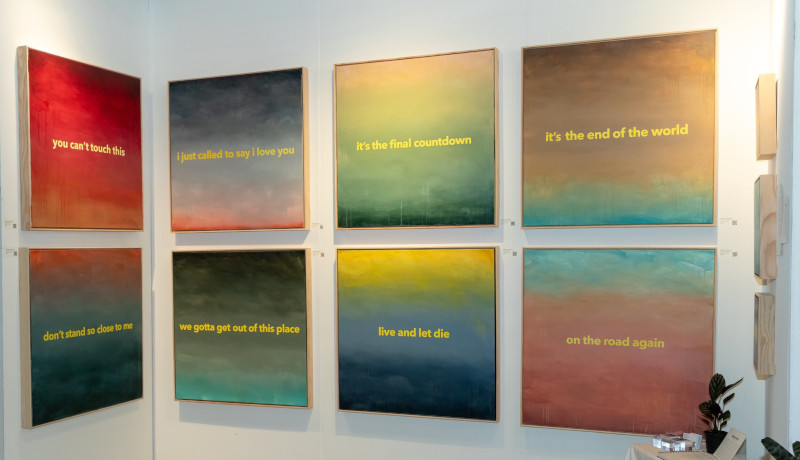
Which is the most important source of inspiration for you? How would you characterize your style?
The most important source of inspiration for the concepts of my artwork is internal observation. I am a deep thinker and like to question everything and my response is typically created through my artwork. I am also inspired by colors and textures from nature and dilapidated textures of walls. I would characterize my overall style as abstract layerism, but am not one to commit to a specific style of art.
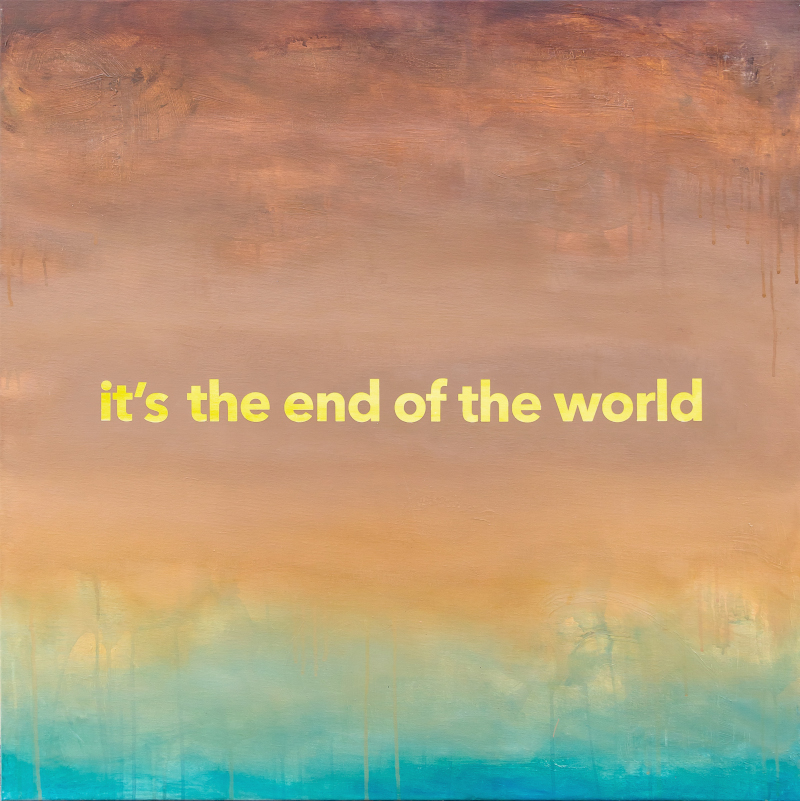
What is the motivation behind your different series? Which role does symbolism play in your work?
I'm fascinated by religion and the similarities between each one, so in my Circle series, I combined different elements from religious symbolism and traditions to create a unique style. The circle is the universal symbol of God used in repetition, as some religions use repetitious prayer. Then comes mixed wax and oil paint, as they are both used in sacred traditions.
The motivation behind “Pandemic” is based on the concept of how everyday phrases have been changed through pop culture music, and now subconsciously playing a song in the viewer’s head similar to an earworm and bringing an audible experience to the artwork itself. I recently showed this series and was amazed to see people singing and dancing along to my paintings. There was no music playing, but as people read the words on the canvas, they correlated it with a song, and it started playing in their head. It was a great moment that really validated my concept.
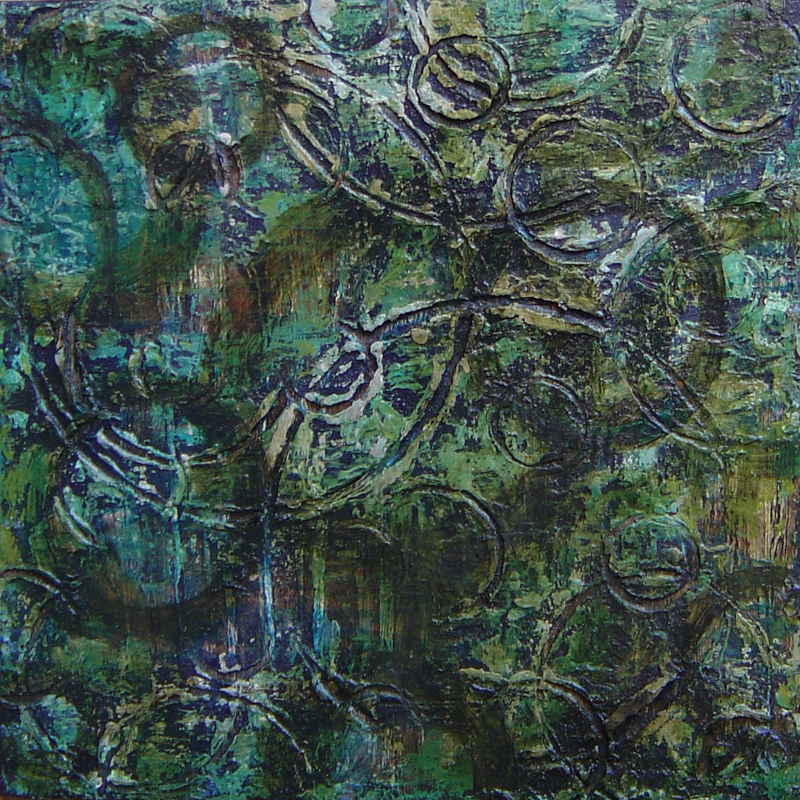
Your “Pandemic” series uses song lyrics, painted in bright yellow on canvas, to address both political, social, and symbolic issues related to the Covid-19 pandemic. How did you come up with the idea for this series? Has the pandemic affected your artistic and personal development over the past 1.5 years?
I had done a few song lyric paintings and during lockdown and realized there were so many songs that related to the pandemic like “You Can’t Touch This". When creating a new series, I like to sketch out not only the artwork but the entire exhibit and how each piece flows into the next, as well as the overall experience. I specifically selected song lyrics that were billboard chart hits that were also everyday words and phrases relating to the Covid-19 crisis and arranged in a timeline of events throughout the Pandemic. Each lyric is painted in a bright yellow color, which has multiple symbolic meanings that signify the virus. Yellow can represent sickness or be a positive happy color. Yellow is also an attention-grabbing color and can signify caution, as in police tape. Each painting has a color scheme with its own unique meaning, as well. For example, the colors in “It’s The End Of The World” are inspired by most apocalypse films with dusty deserted towns and arid land while the blue symbolizes the hope of one day returning back to normal.
Being locked down in quarantine was like a dream for me and allowed me to focus 100% of my attention on my art without any distractions from the outside world. A few pieces from my Pandemic Series were in an online virtual exhibit and although it was exciting to showcase my new work, it wasn’t quite as rewarding as displaying work in a physical gallery and seeing reactions in person. The pandemic has taught me that it’s ok to take personal quarantines now and then for art’s sake.
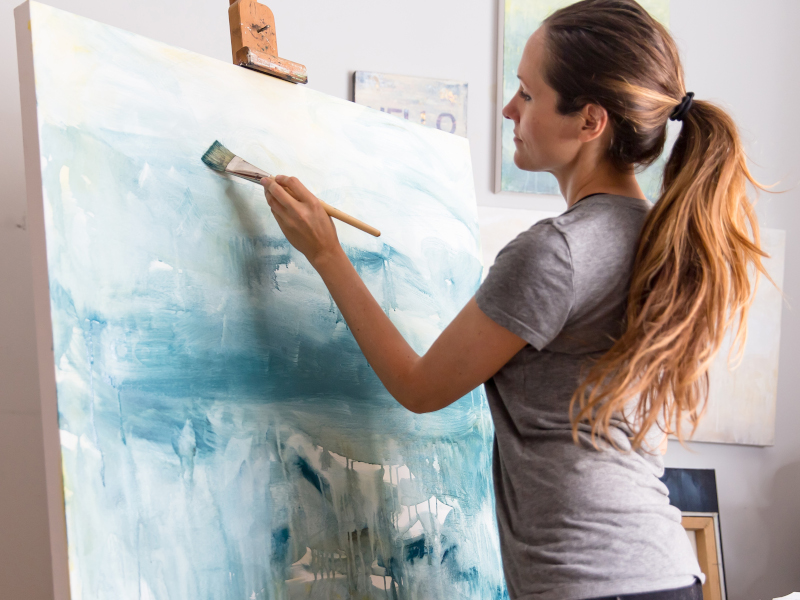
Can you tell us about a unique moment in your artistic career? Why has this moment been memorable?
My brother Kevin is a metal sculpture artist, and our goal was to show at a gallery in Downtown Phoenix for their First Fridays Artwalk on Roosevelt Row. Out of the blue, my former art professor Henry Schoebel contacted me and asked if I would like to start an art gallery right on Roosevelt – I, of course, said yes!! Henry had met a lady who bought a brand new live-work townhouse and in her contract, she had to occupy the downstairs retail space with a business open to the public. Kevin and I got the green light to open our new gallery space - Day Gallery. We built partitions, pedestals, painted the entire space, and installed cheap track lighting.It was a total dream come true - especially since this lady didn’t have a clue how galleries worked and let us take over her space for free and we only had to pay her a 30% commission of the artwork sold. Since Kevin and I were fresh out of college and didn’t have the funds for fancy openings with wine and cheese, we leaned into the starving artist vibe and offered Tang served in red solo cups with Spray cheese on Ritz crackers as our refreshments and then had friends play live music, including a guy who played drums on empty paint buckets - super classy! I ended up selling nearly all of my Circle series paintings and met a lot of great artists, so it was an incredible opportunity. Like most things, it was too good to be true. After 6 months, the lady who owned the space decided to start a scuba shop (in Arizona) in place of our art gallery. Maybe one day we’ll start it back up again.
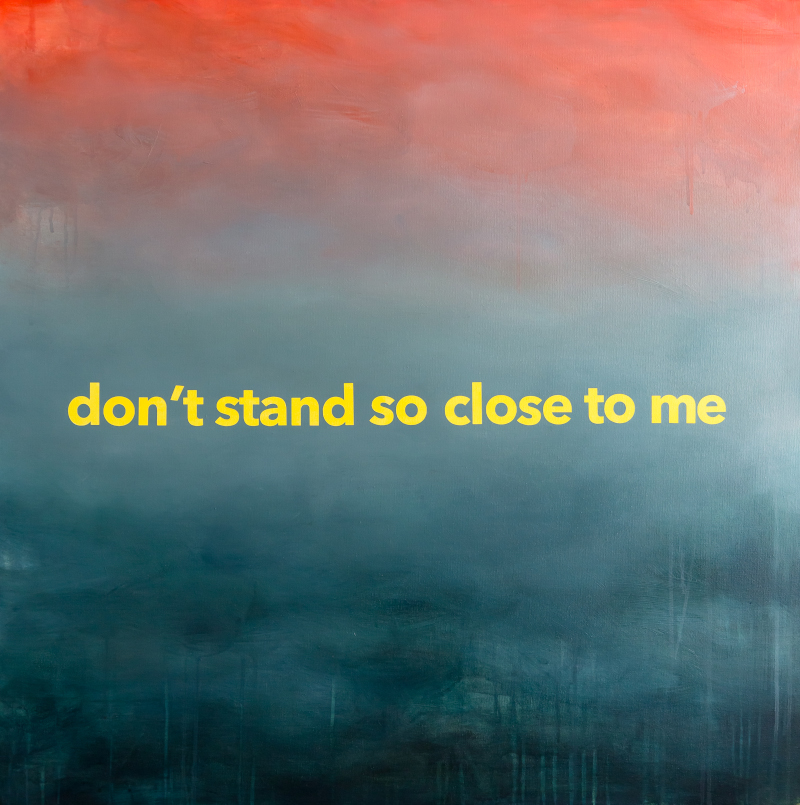
In your opinion — what is the purpose of art? How can art help us understand life?
The purpose of art is a means of communication of expression and feelings and the process of creating the art is like a practice that connects you deeper to your inner being.
I have trouble articulating my thoughts & feelings into words, so I use my art to communicate my core beliefs, emotions, and sometimes add a little humor. I love Post War Modern art because of all the explosive emotion during that time and the abstract expressionist movement encapsulated what people were feeling. I think art helps us understand the innermost core of our being and life existence itself.
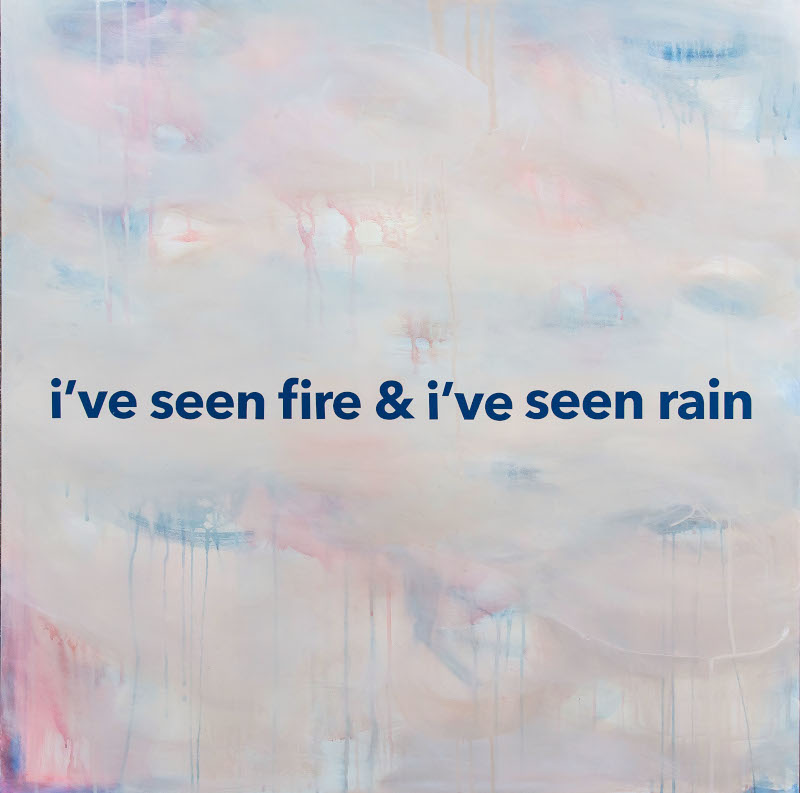
As an abstract painter, photographer, interior, and graphic designer, what was the favorite project you’ve done as part of your artistic career so far? What was special about it?
My favorite project was a commission I did a few years ago. One of my friends was dating art collector Steve Tisch. I met him a few times and showed him my artwork. A few months later, he called me and asked if I could help him with a creative proposal idea and if we could meet and discuss it. I almost fainted when he asked me if I could create a custom painting with the words “will you marry me” in Portuguese (since my friend is Brazilian) in the style of Ed Ruscha. By the way, Steve is close friends with Ed Ruscha; based on the fact that he could have easily asked him to do this, it was even more amazing that he asked me to do it! I went all out with this commission and researched Ruscha’s technique and created each letter custom with tape, applied them with a ruler and straightedge, used an airbrush to paint the background, and removed the letters. This commission was also special because it was the catalyst for my song lyric paintings series.
I was on a tight deadline so didn’t take a great quality photo of this commission but did get a quick client approval shot on my easel.
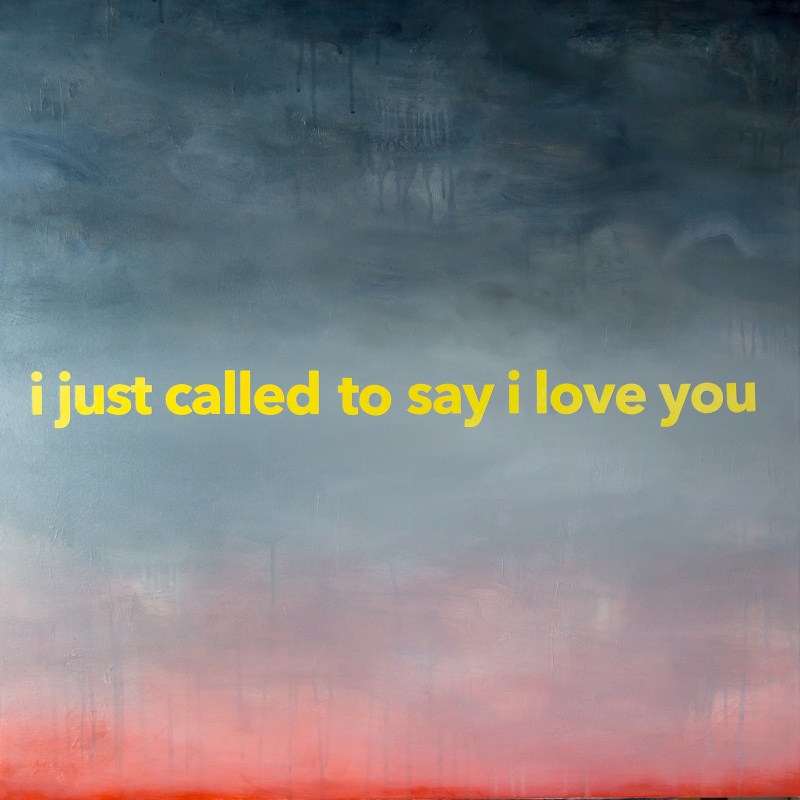
Do you have an artistic or role model? What inspires you about this character and what have you learned from that person?
There’s so many that come to mind for different reasons! If I had to pick an artistic role model, it would be Shepherd Fairey. I am inspired by how he used art as a vehicle to advocate awareness to social, political, and environmental issues. The concepts of his work have inspired me to dig deeper and ask myself what issues I am passionate about and how I can use my art to bring more awareness to these issues.
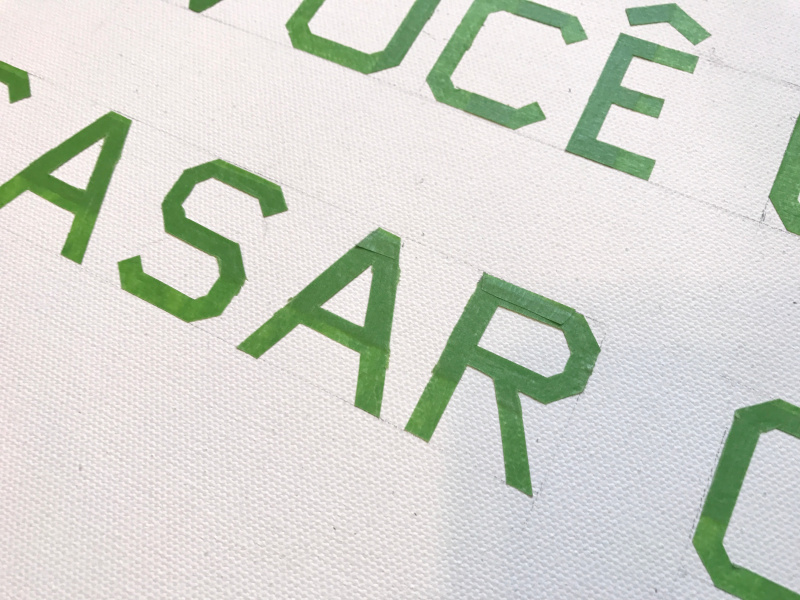
What kind of projects are planned for the future?
I’m currently working on a series similar to the Pandemic Playlist series that incorporates song lyrics that relate to the environment and global warming. It is a series of 10 paintings and each piece resembles a shade, starting from blue to neutral to orange / red tones. When they are displayed in a specific order, it shows the progression of how the earth is warming throughout the year. I was inspired by a color graphic found online and modeled the color scheme to this graphic and have a few sneak peeks of this series on my Instagram @stephdayart.
My goal is to use my art as a vehicle to raise awareness of the effects of global warming in this particular series. I’m also exploring the NFT market and have minted a few pieces on Opensea and Rarible. NFT’s are the future of digital art collecting and I am very excited about this space.
|
|

